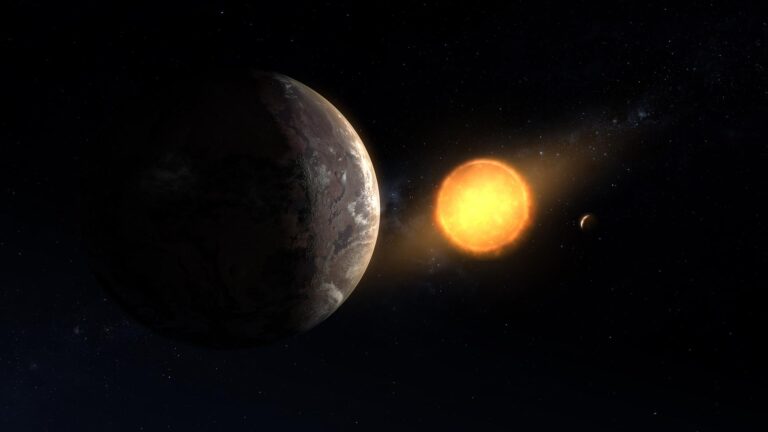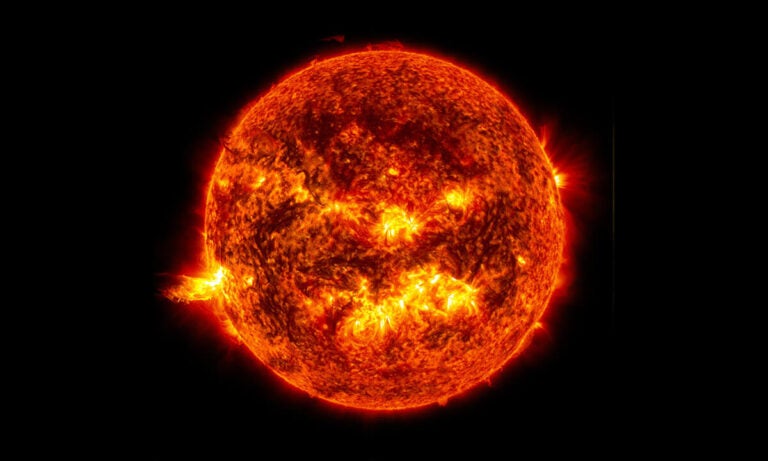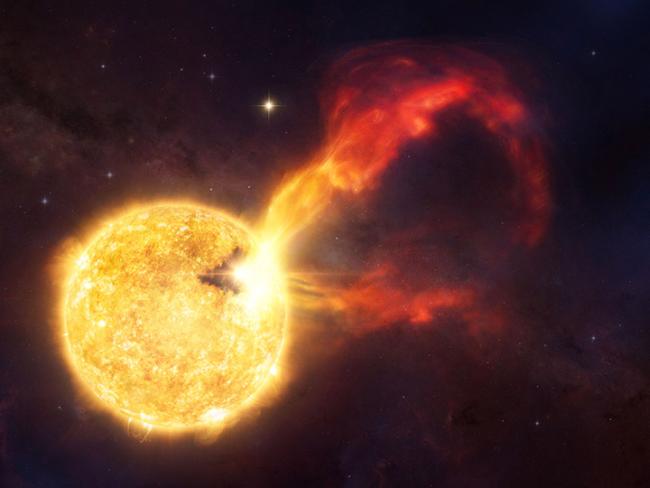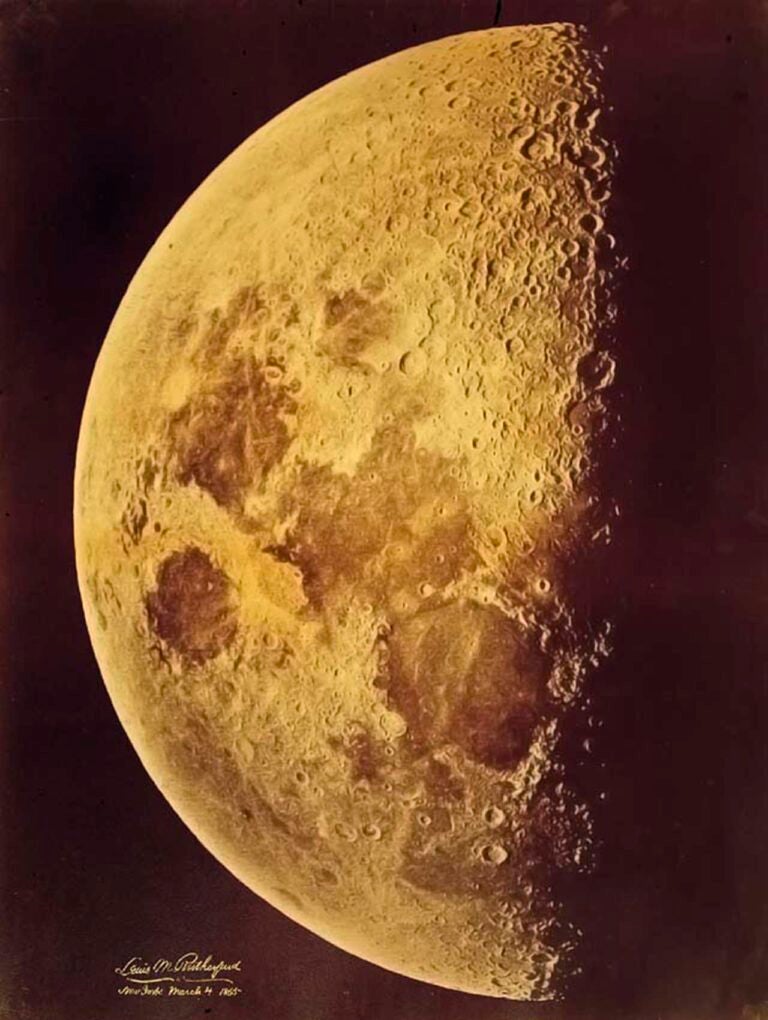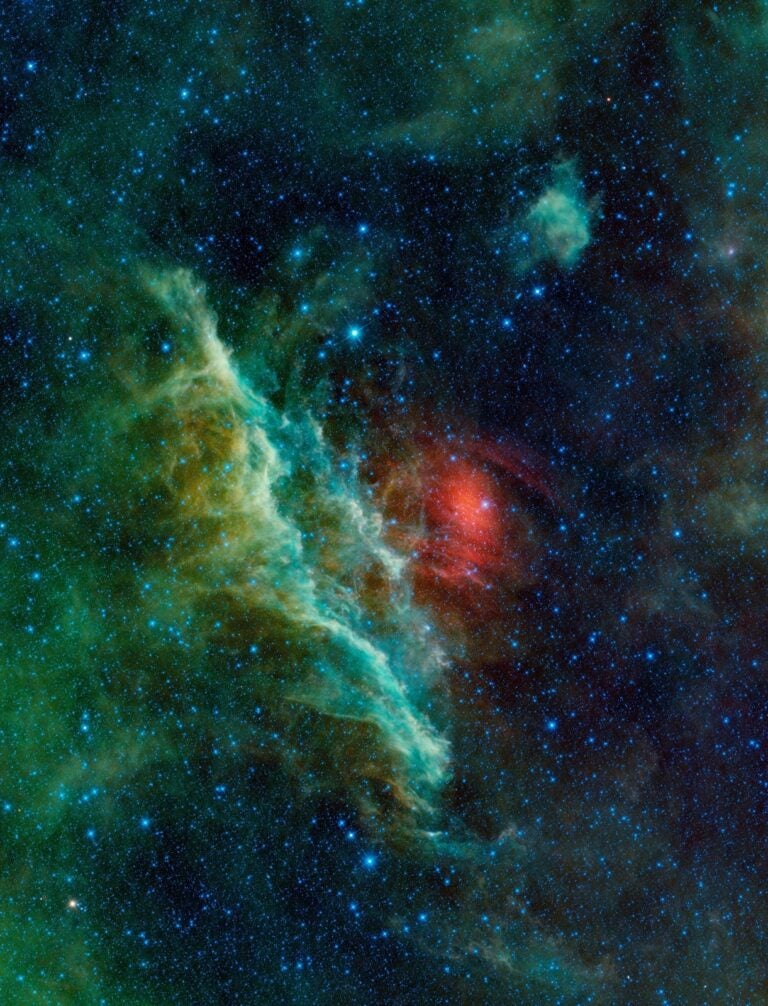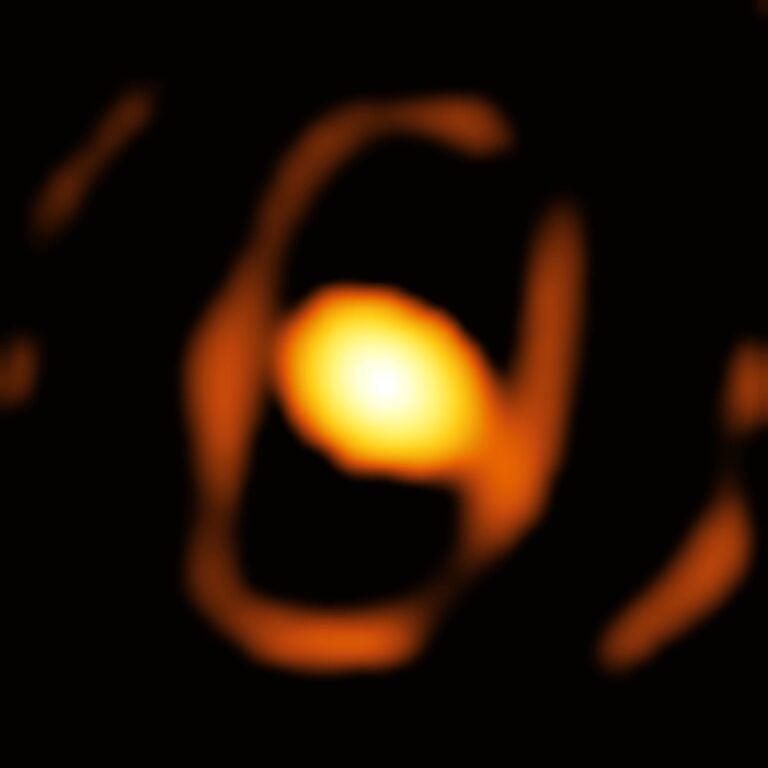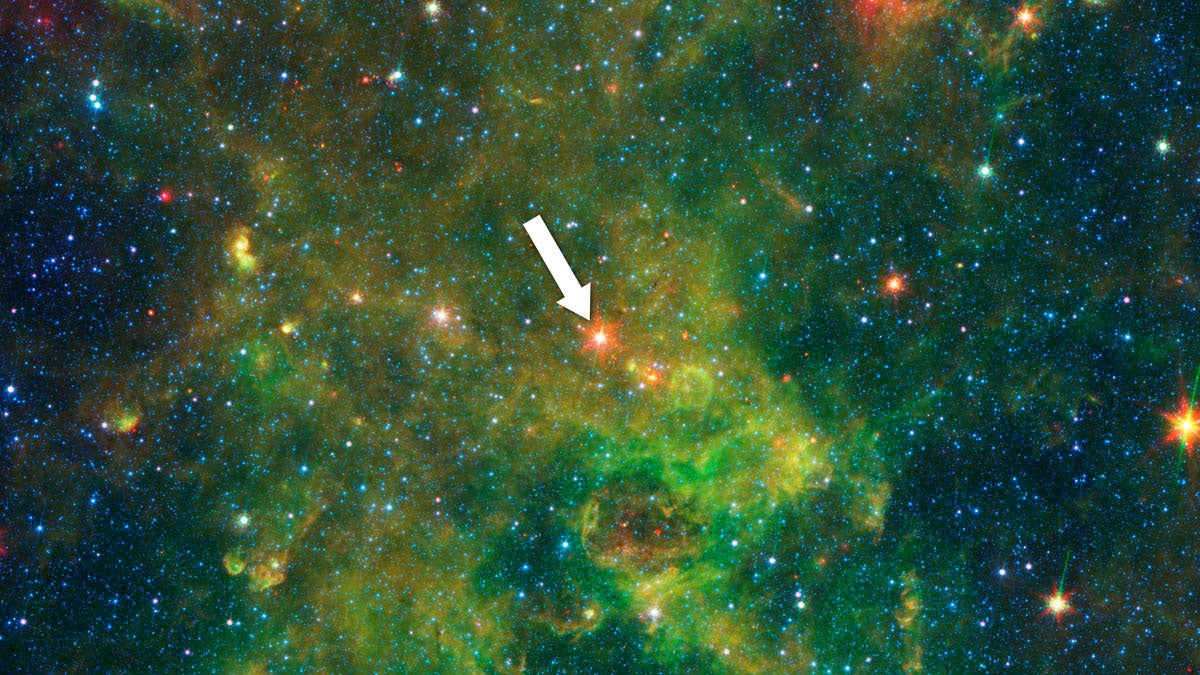
Twelve thousand light-years from Earth, a star is forming. At first, it had all the marks of an aging star on its way to death. But new evidence published in the Astrophysical Journal shows that the star known as IRAS 19312+1950 is likely a protostar, wrapping its surrounding cloud of dust and ice closer as it coalesces.
Martin Cordiner, at NASA’s Goddard Space Flight Center and Catholic University of America, is the lead author of the study in the Astrophysical Journal. Cordiner originally zeroed in on the star because it was thought to be an old star-massive, red, and expanding-of a type known as an Asymptotic Giant Branch (AGB) star, his area of expertise. “I know quite a lot about AGBs,” he says. “But when we discovered, no, it’s a protostar, I had to go back to the books.”
At 12,000 light-years from Earth, it’s further away than the well-known protostar in Orion, KL Source I, which until now has been “one of star formation experts’ favorite sources to look at to find out the earliest stages of massive star formation,” says Cordiner.
But it’s still close enough to study, right in our own Milky Way galaxy, and it has one major advantage over the Orion protostar: It’s far from other objects that would interfere with measurements. “That could make it quite an important object for ongoing detailed studies of the star formation process,” Cordiner says. “How do massive stars form? How do they pull in gas from their surroundings? How do they feed back radiation and energy to the surrounding environment? If you have a nice isolated object like this you can study it more easily.”
For their research, the team used Herschel Space Observatory, which could look through the far infrared spectrum at the star’s dust emission, and also detect water and ice in the cloud around the star with good sensitivity and spatial resolution. They also reanalyzed data from the Spitzer Space Telescope.The new evidence that IRAS 19312+1950 is a protostar, not an old star, is strong. For one, based on the star’s Doppler signatures, it’s shooting jets of gas out of its poles at the comparatively high speed of 90 kilometers per second. “Those are really characteristic features of very young protostars, which are still feeding on their parent gas cloud and they spray out these jets at the poles,” says Cordiner. An old star might spray gas jets at perhaps 10-30 kilometers per second, but anything faster would be so extremely short-lived that it would be vanishingly unlikely to observe, he says.
Also, it’s brighter than previously thought, and the cloud around it seems to be coalescing. If it were a late-stage star, it would instead be expanding.
To learn more about the star’s shape and structure, Cordiner’s team is hatching plans to take images of the star in the far infrared using SOFIA, NASA’s telescope on a Boeing jet. They would also like to explore the star’s chemistry, for which the best instrument would be either the Atacama Large Millimeter/submillimeter array in Chile or the Submillimeter Array in Hawaii. This would allow them to see if the star has a hot core forming complex organic molecules, which would pretty definitively rule out it being an old star.Cordiner says the star is “definitely an exciting object,” one he thinks can teach astrophysicists a lot about how massive stars form. “It’s just one of those objects that keeps on giving.”

